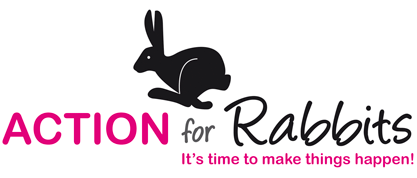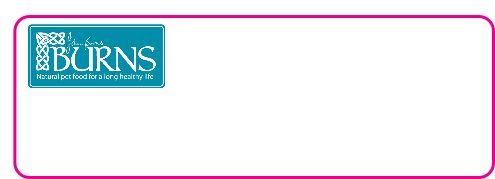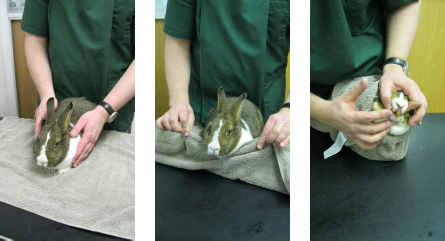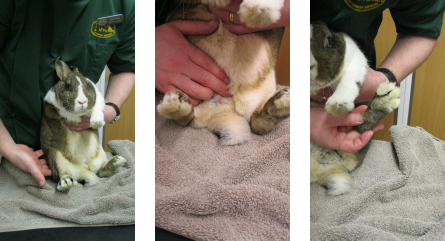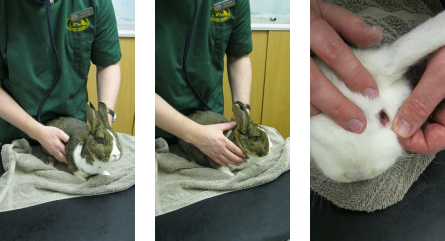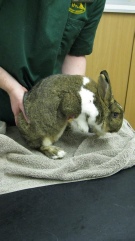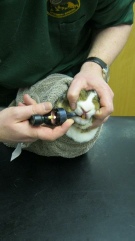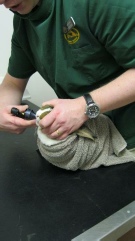Some things to that you can look out for at home and areas that your vet should do in a health check :-
Eyes
Should be bright, a good even shape, not cloudy, not wet, no discharge from the tear duct, not crusty
Ears
Should be clean with no debris, scabs, discharge, mites
Heart
Should have a regular heartbeat and whilst it may be faster than normal due to the stress of visiting the vet, the vet should be able to spot if it is 'unhealthy'
Lungs
The breathing should be regular, clear, not overly noisy and shouldn't be crackly
Bottom
Should be clean, not sore, not wet, no visible poo, no discolouration of the fur, no mites
Genitals
Should be able to confirm sex - but may want to recheck in very young rabbits when they have developed further. Should be able to check for damage (where living with other rabbits, in particular if unneutered and when kept with guinea pigs which is never recommended)
Fur/coat - Should be full, healthy looking, with no mites (looks like dandruff), no bald patches, no fleas, no poo stuck, no scabs and no sores/bites
Feet
Should have nicely clipped nails (long nails can cause health issues such as pododermatitis or sore hocks) and heels should not be fur-less, scabbed, infected or broken open. Feet should not be wet from urine or have poo stuck in the fur
Nose
Should be clean and dry with no wetness or discharge (and no sneezing). The nose is connected to the eyes by the tear duct so if you see any dampness around the nose and eyes, this should be spotted by the vet and investigated
Tummy
Should be soft to the touch and have food in the stomach/caecum but should not be solid/bloated/distended.
Teeth
Both front teeth (incisors) and back teeth (molars) shoud be checked and should be regular, meet properly, not be crooked or an overbite or underbite, and should be clean. Mouth should not smell nasty but healthy - a bad smelling mouth can be a sign of infection. the vet will use an otoscope to check thoroughly in the mouth to see the sides of all of the molars to see if they are overgrowing and 'spurring' which could cause damage to the cheeks or tongue if left unchecked and could cause the rabbit to stop eating eventually
Skeleton
Should not have any deformities, related pain, abscesses or other issues not expected in a healthy rabbit
All of the above can very easily be done by a good vet in one consultation.(please note this list is not exhaustive)

